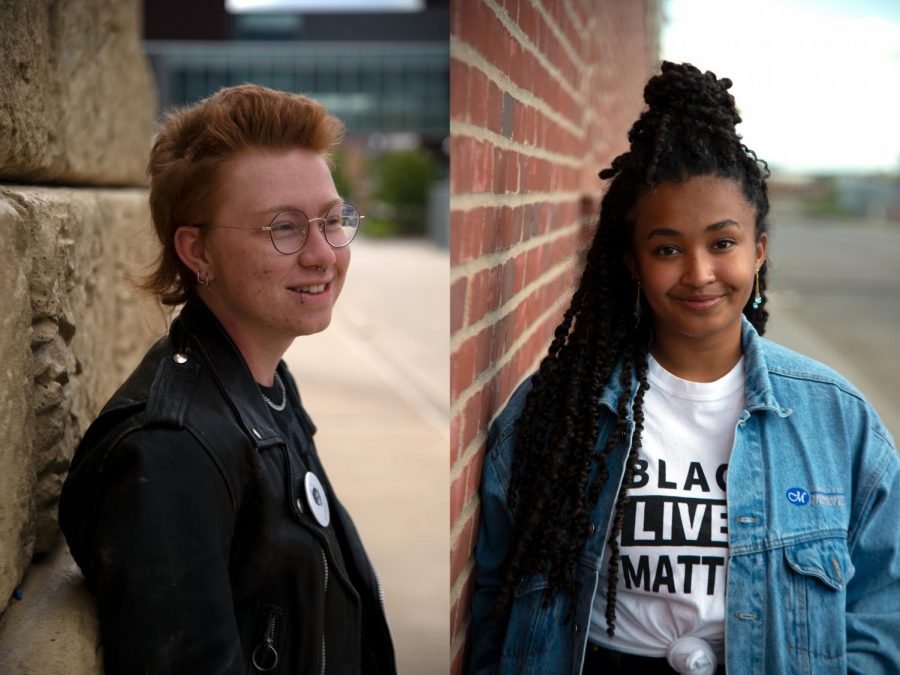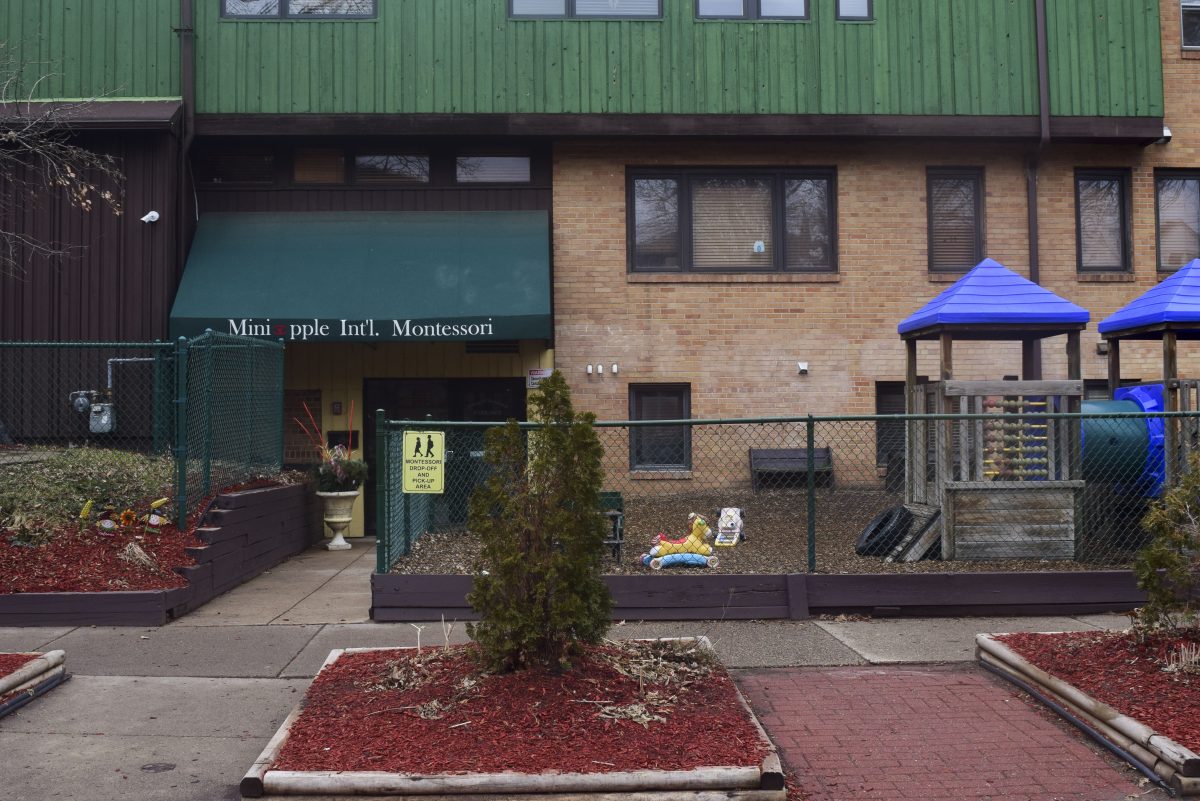As the cameras left the scenes of protests and the grounds of George Floyd Square at Chicago Avenue and 38th Street, University of Minnesota students and community members have continued to show their support for equality and people in need.
People who may not normally be vocal about social unrest across Minnesota have attended rallies and demonstrations. Various forms of social media activism and in-person rallies proliferated mainstream white culture during the statewide lockdown, while some took direct action with citywide mutual aid projects to offer a hand to communities needing assistance.
While mutual aid and protesting are both forms of activism, the main objective of mutual aid projects is to offer resources to marginalized individuals, particularly Black people, Indigenous people and people of color (BIPOC) who are low-income or homeless. It often comes in the form of creating networks for food distribution, housing assistance and providing other resources.
The Daily talked to University students about what showing community support has looked like for them.
Bri Sislo-Schutta, third-year double major in political science and strategic communication
Bri Sislo-Schutta moved back to her hometown of Shoreview after University students were sent home last spring due to the coronavirus outbreak.
Sislo-Schutta said her identity as a Black woman guides her to be strong in her activism, and living in a predominantly white suburb that has “never been anti-racist,” said she found herself faced with performative activism on social media after police killed George Floyd. She said she was left wondering: Why do people care now?
Sislo-Schutta first took action by writing a letter with her fellow graduates of color to her old high school, informing the school of their failures to people of color. The third-year University student said there was a lack of discussion around race and representation of Black people, Indigenous people, and people of color within their education.
From there, she organized protests across the suburbs surrounding Shoreview, including Roseville, Arden Hills and New Brighton. She said she felt a sense of empowerment as more than 1,500 people turned out to support equality and denounce police brutality.
“Communities like the one that I grew up in need to divest from this individualistic attitude,” Sislo-Schutta said. “I’m hoping that this summer and this movement prompted all of us to think more out of the idea of a culture of care … and less about structures and hierarchy and individual pride.”
Sislo-Schutta said her goal was to paint a picture of the Black experience to her predominantly white community. In June, Sislo-Schutta started the North Suburbs Youth Coalition for Justice, a Black-led group centered in the suburbs and comprised of young adults and students. The group has already started a book club focused on providing free literature, discussion and guest speakers for Black students.
“I just want to create space where people know that they’re taken care of … especially Black students and Black youth … [a] space for authenticity and vulnerability,” Sislo-Schutta said.
As a Black woman, she said the goal of creating a community for Black students keeps her moving forward — despite the struggles that come with balancing life as a University student.
“I don’t have all of the answers by any means and I’m still doing so much learning and unlearning,” Sislo-Schutta said.
But with the help of her community and a commitment to bettering the lives of Black youth, she said she is ready to take it on.
Jacob Walling, second-year medical student, White Coats for Black Lives member
Jacob Walling first became aware of disparities in the medical system when working as a scribe in a St. Cloud emergency room. The Maple Grove native tended to the large Somali population and saw firsthand the struggles many of them faced, from language barriers to confusion about the complex healthcare system.
“The system wasn’t set up to serve them as well,” Walling said.
Since coming to the University of Minnesota, his concern for people of color in need of medical attention has solidified.
Now one year into his medical school education, Walling is a member of the University’s chapter of White Coats for Black Lives (WC4BL), a group made up of members of the medical community advocating against racism in medicine. He said he joined because he, like many others, felt that race and social determinants of health were dismissed too quickly in their classes.
After a University medical student defaced George Floyd’s mural in George Floyd Square in August, medical students were quick to work on mending the relationship between the school and the community through mutual aid projects.
Walling notes that oftentimes, as a white medical student, it feels as though it is mostly other white students telling people of color how to feel. He said he hopes that white students instead listen and let Black students lead conversations.
WC4BL applies this same principle to the mutual aid they assist with at George Floyd Square. The volunteers in the community space are preparing for winter, ready to clear snow and ice to maintain a safe space for visitors and community members to pay their respects.
Along with participating in mutual aid relief, University medical students have been pushing for curriculum changes within the medical school. The University of Minnesota’s Medical Education Student Reform Coalition formed in June aiming to create a more accurate curriculum that considers how race can impact healthcare and health outcomes.
They have been meeting with University faculty to discuss the group’s demands for changes on campus.
Many issues that have arisen surrounding racism within medicine “wouldn’t have been known until a [person of color] said something about it,” Walling said. “My role is to be united and [do] what I can so the entirety of the workload isn’t falling on their shoulders.”
Walling said racism results in societal problems that impact access to healthcare or exposure to pollutants.
“Race is not a risk factor,” Walling said. ”But racism is.”
Fanta Diallo, 2020 graduate of marketing and strategic communication, Students for a Democratic Society member
Fanta Diallo grew up just three blocks away from where police killed George Floyd. She was there 30 minutes after he died.
Floyd’s death hit hard for Diallo, but her anger and sadness were not anything that she was not used to, she said. Diallo said she has been constantly worried that she or her younger brother would be the next target of police brutality.
“I’m so far beyond the point of being scared … people need to start waking up,” Diallo said.
A self-described activist her whole life, the 2020 University graduate used her community connections within the school to help empower and assist Black youth in Minnesota.
Diallo partnered with Students for Democratic Society (SDS) and the Black Student Action Committee this summer and started the petition to create the George Floyd Memorial Scholarship and specifically designate it for students of color.
Diallo said that at the beginning of the pandemic and start of the uprisings in her community, it was hard to balance her mental health and drive to be a leading activist.
“I was consumed by it all, not sleeping,” Diallo said. “I was in the epicenter of everything.”
Diallo and SDS are still working on finalizing the language of the scholarship to better fit their message of resilience and justice for Floyd. In their attempt to stop the “watering down” of the language used in the scholarship, Diallo hopes to shed light into the reality of police brutality and its effect on a community.
Jimmy Cooper, third-year cultural studies and comparative literature major
Jimmy Cooper thinks that the term “activism” is losing its significance. During Minnesota’s lockdown last spring, Cooper said there was an overabundance of social media posts flashing educational infographics concerning systemic racism and how to assist protests in Minneapolis.
Cooper, a white person, said they are trying to steer away from being a “white savior” and make sure not to co-opt the movement by assisting in a self-serving way.
“I’m not valiantly standing up for others in an act of white saviorism … I’m standing as an accomplice to someone else’s struggle,” they said.
Last summer, Cooper worked with the Minneapolis Sanctuary Hotel that opened up in the wake of the protests for George Floyd.
After the city-mandated curfew in late May was put in place, and national guard troops advanced on Hiawatha Avenue, an encampment of people experiencing homelessness found refuge in a former Sheraton hotel near Lake Street and Chicago Avenue. The south Minneapolis hotel was transformed into a sanctuary for unsheltered people in the memory of George Floyd, who was a former shelter worker. The project lasted two weeks before closing down.
As a person who uses “they/them” pronouns, Cooper recognizes their space as a marginalized person who still carries white privilege.
“I need to be aware of myself and the space that I am holding mostly as a white person,” Cooper said. “Ultimately, it’s not about me.”
Quinn Morris, fourth-year in the Nursing program, University of Minnesota Chapter President of Women for Political Change
Women for Political Change (WFPC) has played a crucial role in mutual aid funding since the Minneapolis protests this summer. The Minneapolis organization, which started at the University, opened up the Frontlines Funds on May 30, raising more than $94,000 from community members and supporters. Proceeds have been focused towards Black people, Indigenous people and people of color, transgender and nonbinary young people and businesses led by them.
The WFPC website details that The Frontlines Funds were opened up after organizers buying and distributing supplies received so many personal donations via online payment platforms that their accounts were locked. The funds were distributed through microgrants, ranging from $500 for individuals and $5,000 for groups. $32,000 has been disbursed to 64 individuals and $18,000 has gone out to groups, according to the WFPC website.
At the WFPC University chapter, president Quinn Morris said the student group focused on education and creating a space for learning and growth for the group’s members and local communities. Starting this summer, WFPC held a book club exclusively featuring books by Black authors.
The group read books like “Are Prisons Obsolete?” by Angela Davis and “All About Love” by bell hooks.
From a variety of age ranges and colleges from the University, the online discussions were centered around Black perspectives. Considering the University’s predominantly white status, Morris noted that white voices need to be secondary in order to create a space for healing and the acknowledgment of white privilege.
After the summer book club, Morris said the participants were much more aware of their learning and education. She described the WFPC board as being majority white and realized how hard it is for people of color at the University to find an inclusive space.
WFPC is extending its book club into the fall, focusing on the topic of love.
To find more information about Twin Cities mutual aid projects, go to tcmap.org.

























